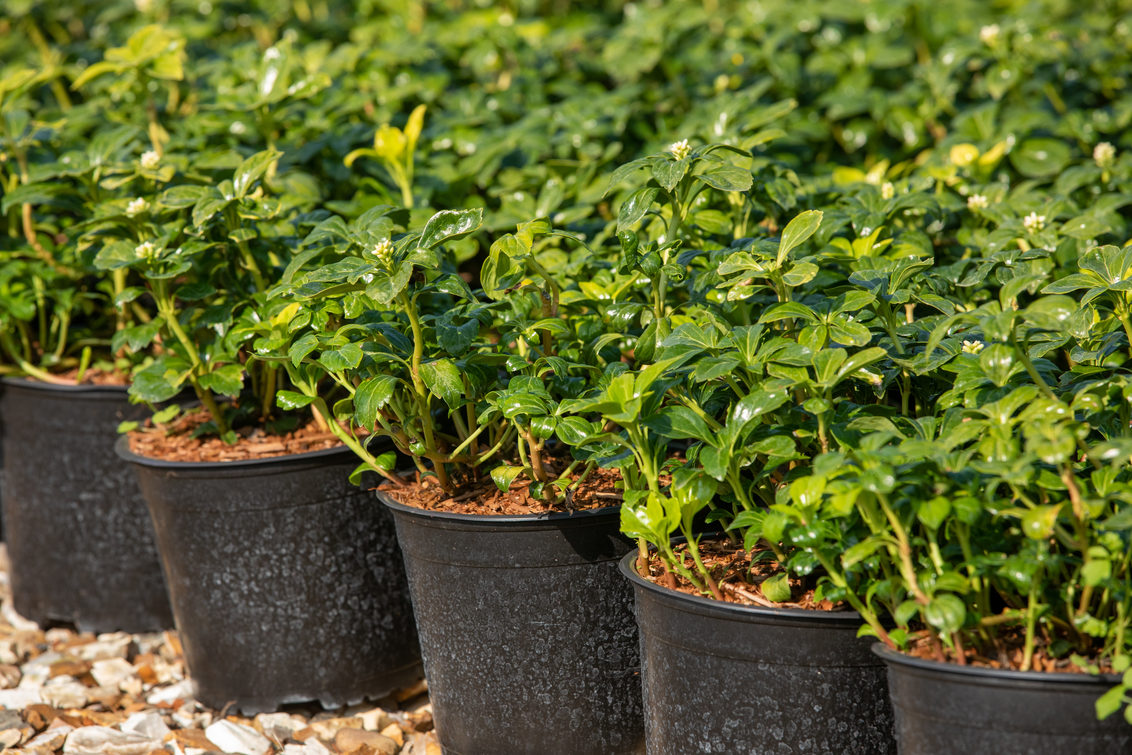Don’t forget your roots

With spring round the corner, and sowing, transplanting and potting lines operating at their peak, root health takes even more of a priority than usual.
Root diseases caused by species of the oomycete pathogens Pythium and Phytophthora are particularly difficult to manage. Although they share some characteristics with fungi, some aspects of their biology and biochemistry are dissimilar meaning only certain fungicides, such as Subdue, have a mode of action able to control them.
Different Pythium and Phytophthora species grow best at different temperatures: some Pythium species can grow and spread at below 15°C.
Cultural control
These oomycetes spread readily in water – including in over-moist growing media and in irrigation systems, especially if recycling the water – so cultural control starts with good irrigation management.
Avoidance of overwatering is key, along with use of a free-draining growing medium. Water drawn from sources other than mains or boreholes – collected from greenhouse roofs or nursery run-off, or recycled, for example – should be treated or passed through a slow sand filter and routinely tested for oomycete and other root pathogens. Lateral flow diagnostic kits are available for Phytophthora.
Pests such as sciarid and shore flies need to be controlled as they can spread oomycete spores and create wounds through which the disease can enter; any plant debris that can act as a source of infection needs removing. These pathogens might arrive on your nursery on bought-in seedlings or young plants so check with suppliers whether these were given a preventive treatment. If you grow on capillary matting, disinfect or renew it regularly.
Young or recently transplanted or potted plants are most vulnerable to Pythium, though ‘damping off’ does not spread so readily within batches now that cell trays have largely replaced traditional flats.
What to look for
Any above-ground symptoms, such as leaf wilting or yellowing, are suspect because they could indicate root damage which is preventing the plant from taking up enough water or nutrients.
Protected ornamentals and propagation. Chlorosis, wilting and stunting, or complete collapse, are usually the first signs of Pythium infection. Seedling crops may never emerge, or do so unevenly, while infected cuttings may fail to root. Lightly infected young plants may fail to make a marketable grade following potting and growing on. Infections often cause a noticeable brown discolouration on the roots which tends to start at the root tips.
Bedding plants prone to Pythium include antirrhinum, alyssum, lobelia and tagetes; pot plants include cyclamen, fuchsia, pelargonium and poinsettia.
Phytophthora is less common than Pythium in protected ornamentals but can inflict more damage. It tends to attack more mature plants, damaging root and crown tissues and causing leaf yellowing or wilting.
Cineraria, dianthus, petunia, tagetes and viola are among bedding crops particularly susceptible to Phytophthora root rots; as are pot plants such as hedera, bellis, fuchsia, impatiens, poinsettia and primula.

Hardy nursery stock. Poor growth, leaf yellowing or browning, and wilting, are tell-tale signs of roots damaged by Pythium or Phytophthora. Phytophthora-infected roots may be discoloured brown or black, and can be soft or even soggy; where the pathogen moves into the stem base, the tissue there may brown or blacken too.
Box, heathers, choisya, cordyline, hebe, lavender, lilac, pittosporum, rhododendron, viburnum and a range of conifers and ornamental trees are susceptible to Phytophthora root and basal rots.
Leaf and stem symptoms on nursery stock attacked by Pythium are similar to Phytophthora infections. Root rotting may appear, as a grey or brown discolouration, at root tips only. Infection may spread into the crown of herbaceous species.
Fungicide treatment
Even with good cultural control, protecting crops by treating the growing medium with Subdue is a worthwhile precaution. Its active ingredient, metalaxyl-M, is a systemic phenylamide fungicide with preventive and curative activity against oomycete root diseases.
Subdue is versatile enough to be applied as a drench to the growing medium surface immediately after sticking or transplanting cuttings, and potting; or as a spray onto, and incorporated into, the growing medium immediately before transplanting or potting.
It’s best used preventively in the early stages of production or wherever you identify a significant risk of infection, but is also an effective curative drench treatment applied to the growing medium.
Crops growing in treated media take the fungicide up through their roots – it’s active against the pathogens in the growing medium or in the plant tissue. It works by targeting the mechanism by which oomycetes copy their genetic information for making proteins, the starting point for many key aspects of their metabolism.
If you’re using biological controls in the growing medium, such as pest-killing nematodes or beneficial fungi such as Trichoderma, the evidence suggests they’re not harmed by Subdue.
Prestop (Gliocladium catenulatum), a biofungicide available from our partners at ICL, is worth considering as part of a resistance management programme against oomycete and some fungal root diseases. It can be applied as a drench or through drip irrigation.

